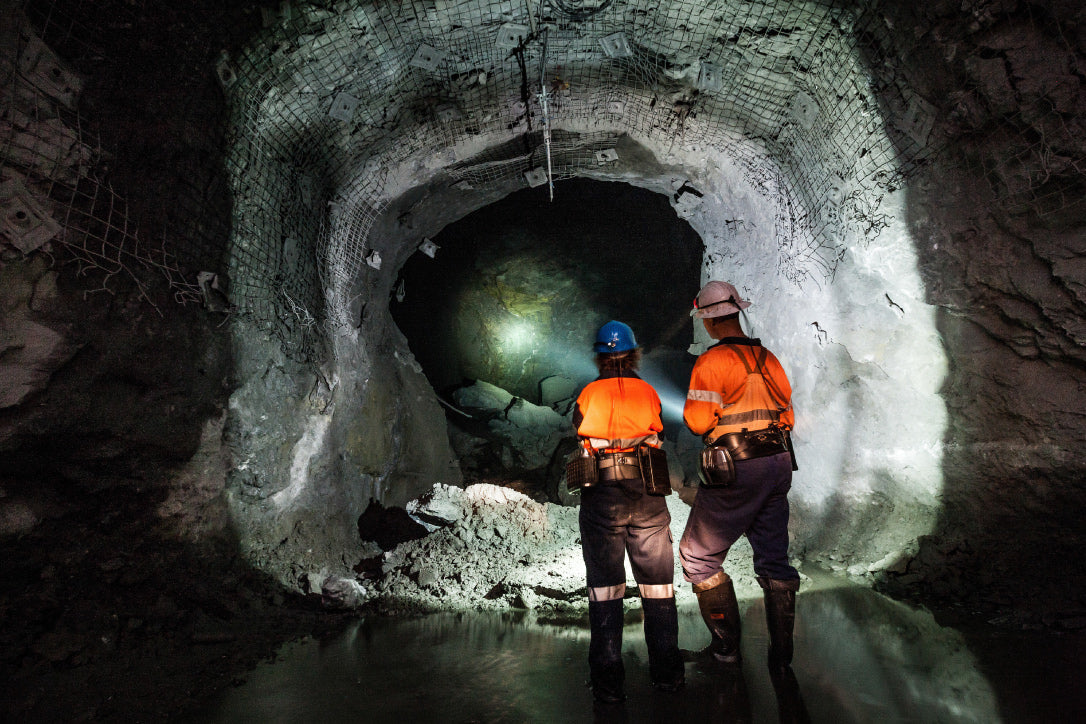Wearable Smart Gear for Workers
One of the most human-centric applications of IoT in mining is the development of wearable smart gear, these types of devices can monitor location without the use of GPS, there is fall detection and by pressing the alarm button, it will send an emergency alarm, adding an additional layer of safety. Additionally, helmets, suits, and other types of safety gear are equipped with sensors that continuously monitor the health and safety conditions of miners.

Enhanced Safety
IoT plays an invaluable role in elevating safety standards within the mining industry. Sensors strategically placed in mines can provide real-time monitoring of environmental factors such as toxic gas levels, temperature fluctuations, and seismic activity. These monitoring capabilities ensure swift reactions, like immediate evacuations or safety drills, thereby preserving the well-being of both human resources and machinery.
Real-Time Ventilation
Continuous monitoring of air quality for ventilation systems is another critical application of IoT in mining. In underground mines especially, maintaining optimal air quality is vital. Real-time data on toxicity levels and ventilation metrics allows for immediate actions to be taken, thus ensuring a safe and breathable environment for workers.

Predicting Breakdowns
IoT technology also contributes to preemptive safety measures by helping to forecast the breakdown of unstable shafts or malfunctioning equipment. Sensors gather real-time information, enabling predictive analytics to indicate where and when problems might occur. This capability allows for proactive interventions, reducing the risk of accidents and enhancing overall safety.
Operational Efficiency
IoT’s applications extend beyond safety. Data-driven insights significantly enhance operational efficiency and productivity. For instance, automated vehicles and drones equipped with sensors enable efficient material transport and provide detailed terrain mapping. Such innovations also lead to cost reductions by minimising labour requirements and facilitating predictive maintenance to reduce operational downtime.
Benefits the Company, Benefits the Earth
The practical implications of IoT in mining are both broad and deep, affecting everything from administrative centres to on-site operations. Advanced monitoring and analytics capabilities enable managers to make informed decisions based on real-time data. In addition, IoT devices help companies meet regulatory compliance, particularly in environmental stewardship, by continuously monitoring impacts on air and water quality, as well as local wildlife.
"Through IoT, mining transcends traditional limits, offering not just safety but a greener, more sustainable interaction with the Earth."
Future Outlook and Advanced Technologies
IoT's influence in mining is amplified when combined with other emerging technologies like Artificial Intelligence. AI-driven algorithms can sift through the vast data sets collected by IoT devices to offer predictive insights and operational recommendations. Industry surveys indicate that 70% of large mining organisations see IoT as providing a competitive advantage.
The role of the Internet of Things in the mining industry is both expansive and transformative. It not only enhances safety and operational efficiency but also paves the way for advanced technologies like AI. As we look to the future, IoT stands to become an even more integral part of global mining operations.





